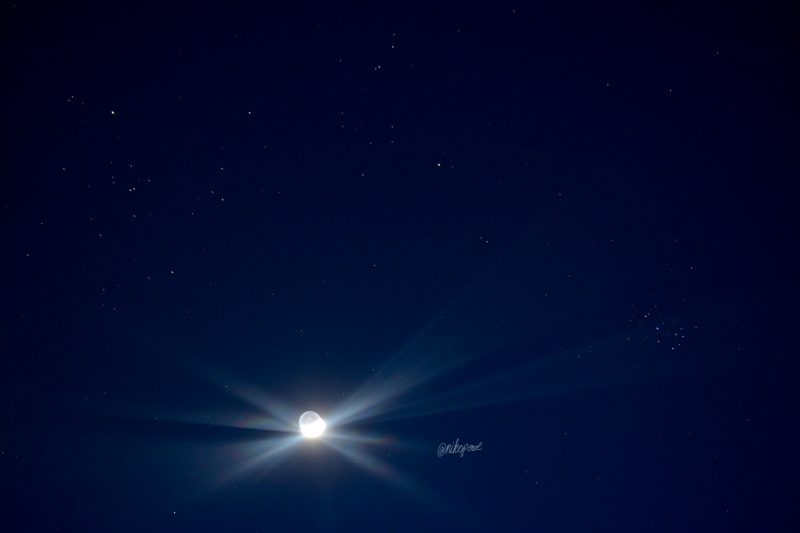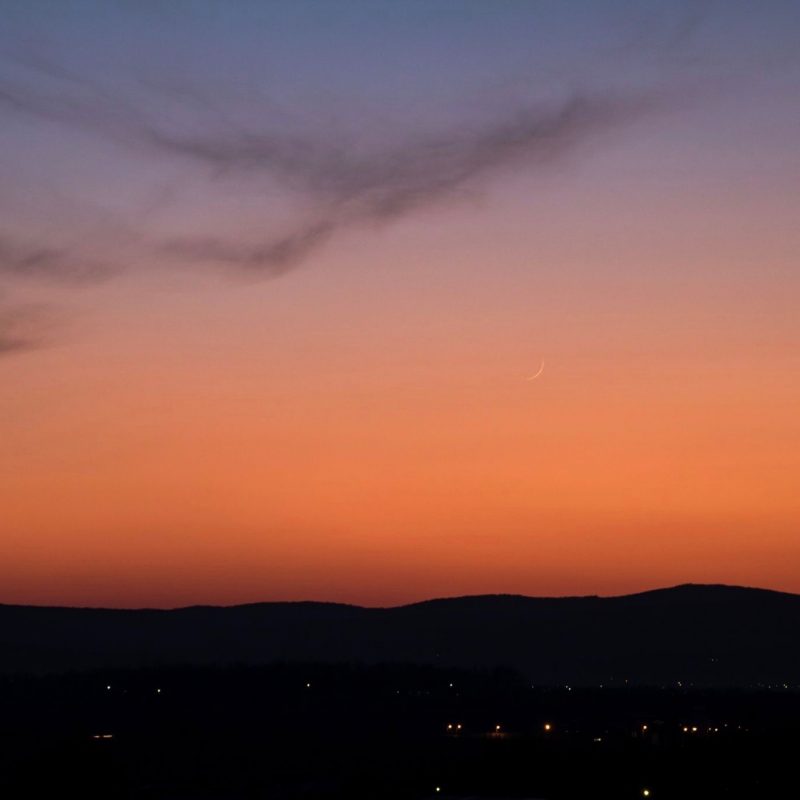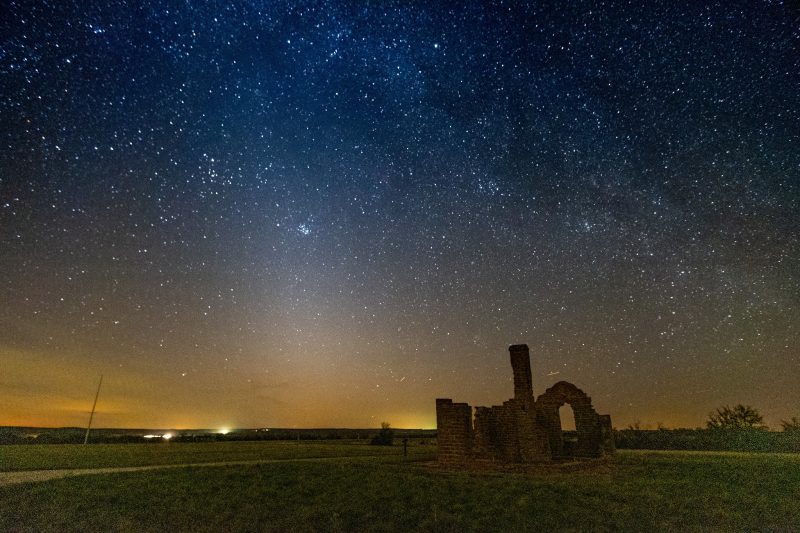Generally, any moon that’s less than one day old (or 24 hours past new moon) is hard to spot with the eye alone, or, sometimes, even with binoculars. For the most of the world, however, the moon was over a day old after sunset on Saturday evening (April 6, 2019). And so we heard from many people today who saw the April 6 young moon, a fleet little moon that appeared in the west at evening twilight on Saturday, then set before nightfall. If you missed it, check out the young moon photos posted at EarthSky Community Photos. Or just look outside in the coming evenings, after the sun goes down.
The moon will be waxing larger and appearing farther from the sunset each evening. On April 7 to 9, you can watch as the moon sweeps up past the red planet Mars, the famous Pleiades star cluster – also called the Seven Sisters – and the red star Aldebaran, which represents the Eye of the Bull in the constellation Taurus.

If you have clear skies, watch for the moon on each of the coming evenings. And realize that the moon’s motion upward away from the sunset from night to night is due to its motion in orbit around Earth. Each hour, the moon in its orbit edges its own angular diameter farther from the sun on the sky’s dome. Thus, the widening lunar crescent stays out a little longer after sundown.
Also, as it moves away from our line of sight to the sun, the sliver of the moon’s daytime side turns increasingly toward Earth.
In other words, the older the moon gets (the farther it is from new moon), the easier it becomes to see … farther from the sunset, with more of its illuminated side showing.

By the way, young moons in early spring are usually much easier to catch than young moons in early autumn. That’s because the ecliptic – the approximate monthly pathway of the moon – hits the sunset horizon at a steep angle in spring yet a shallow angle in autumn. And since it’s now spring in the Northern Hemisphere and autumn in the Southern Hemisphere, you’d normally expect this April young moon to be more easily viewed in the Northern Hemisphere.
But this time around, the April 2019 new moon passed 5 degrees (10 moon-diameters) south of the ecliptic, greatly negating the Northern Hemisphere’s advantage and the Southern Hemisphere’s disadvantage.
That’s probably why we saw so many young moon photos today. They were coming in from various spots arounds the globe.
And if you live at temperate latitudes in the Northern Hemisphere, be mindful that the sparse moonlight over these next several evenings may provide you with your last good opportunity to view the post-dusk zodiacal light until next year.

Bottom line: After sunset on April 7 to 9, 2019, watch for the young waxing crescent moon to widen day by day as it climbs upward toward the red planet Mars, the Pleiades star cluster and the ruddy star Aldebaran.











